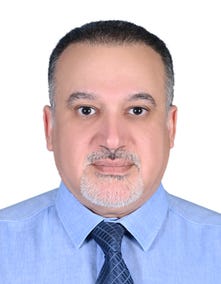Ventral hernias of the abdomen are defined as a non-inguinal, non-hiatal defect in the fascia of the abdominal wall. Ventral hernias are complex because of different factors including:
The presence of local infection
Size of the defect (large)
Obesity, and other comorbidities
The unusual location away from the common midline hernias (multiple)
Previous unsuccessful repair
A survey in 2016 showed that 65 per cent of experts agreed that loss of domain and hernia volumes greater than 30 per cent of abdominal contents are mandatory characteristics for defining large, complex abdominal wall defects.
Despite operative innovation, recurrence rates remain far from acceptable. For this reason, surgeons are now enhancing their focus on optimising patient-related factors.
Related: Innovation caps rising costs of surgical care
SURGICAL MANAGEMENT OF COMPLEX VENTRAL HERNIA
Preoperative consultation
Preoperative assessment of large ventral hernia defects is the cornerstone of success. Evaluation should begin with a thorough history and physical examination. Overlying skin changes such as ulceration, thinning, and cellulitis should also be noted, as should the presence of draining sinuses or exposed mesh.
Surgical history, as well as previous operative reports, should be reviewed. The urgent or emergent nature of presentation can affect morbidity and mortality, with mortality rates reported to be 0.3 per cent for elective repairs compared with 1.1 per cent for complicated cases.
Preoperative optimisation

Preoperative imaging
Computed tomography (CT) of the abdominal wall is an excellent tool for assessing ventral hernia characteristics. According to Earle et al, CT imaging can define musculature integrity and assess defect relationship to intraabdominal structures, enhancing a surgeon’s ability to determine the safest and most ideal approach for mesh placement.
Options for operative repair
Laparoscopic ventral hernia repair when compared against open techniques has consistently shown decreased overall complication rates, decreased hospital length of stay, and a quicker return to work.
Robotic ventral hernia repairs have also become popular secondary to increased freedom of motion during surgery.
Component separations can be performed in several different ways and are typically reserved for large defects in which a tension-free closure cannot be achieved.
Rives-Stoppa Repair: The Rives-Stoppa repair was first described in the 1980s and uses a retrorectus dissection plane. However, despite its excellent record, the limited lateral dissection used in this technique limits its applicability.
Posterior Component Separation with Transversus Abdominis Release (TAR): The transversus abdominis release has demonstrated utility in repairing complex and non-midline defects that the Rives-Stoppa repair fails to address.
Anterior Component Separation: The anterior component separation uses a dissection anterior to the rectus muscles. During the operation, a subcutaneous plane is formed by incising the external oblique fascia, just lateral to the lateral aspect of the rectus muscles.
Postoperative care

With the large number of abdominal operations performed each year, the incidence of ventral hernias is on the rise. Open ventral hernia repair remains the primary option for surgeons when faced with complex abdominal wall reconstruction. The advancements in tension-free repair as well as component separation have improved success rates. However, despite improvement, certain aspects of surgical repair have yet to translate to acceptable results.
Related: Laser-assisted robotic knee surgery advances orthopaedic treatment
To improve successful correction rates of complex abdominal defects, emphasis has shifted from surgical technique and toward a multimodal approach involving optimisation and identification of suboptimal characteristics. Although the technical experience and procedural method used by the surgeon are of importance, assessing patient-related factors and comorbidities may provide the missing aspect necessary for an ideal operative approach.
References available on request.

Dr. Sulaiman Shantour is a Consultant Surgeon at Ain AlKhaleej Hospital. He will be speaking at the Surgery conference in Arab Health 2024.

















.webp?width=700&auto=webp&quality=80&disable=upscale)